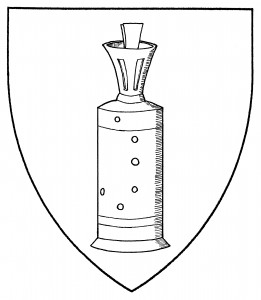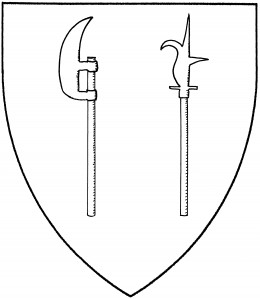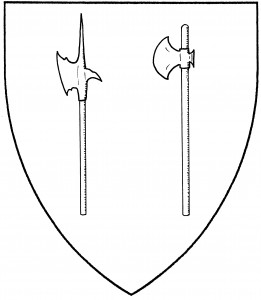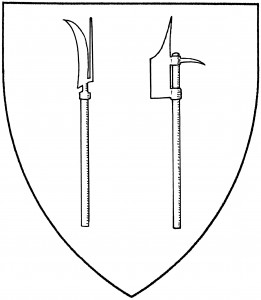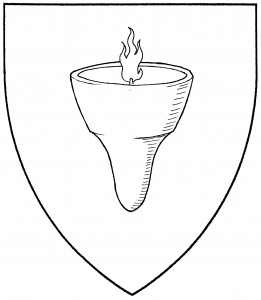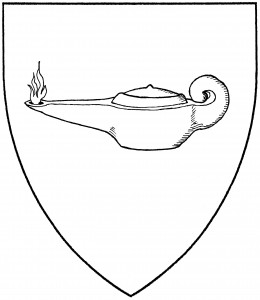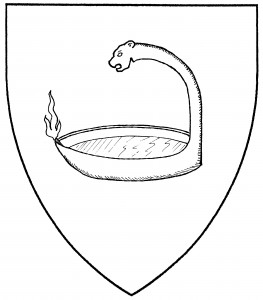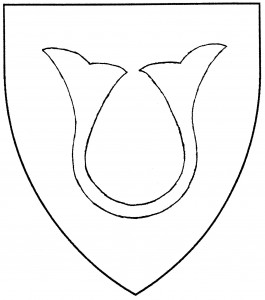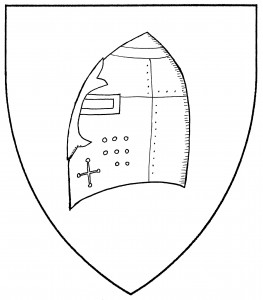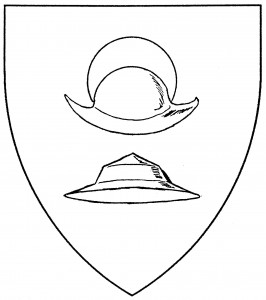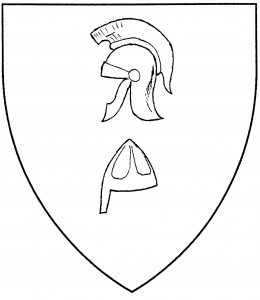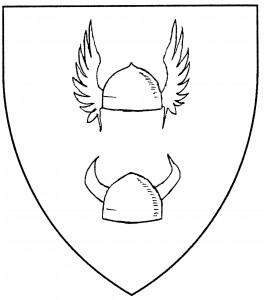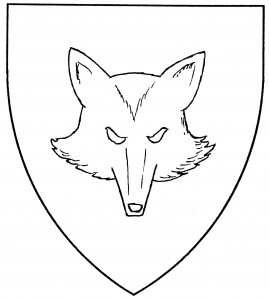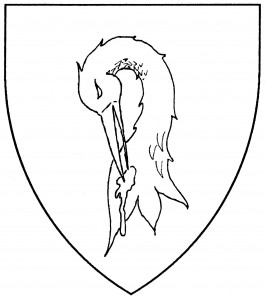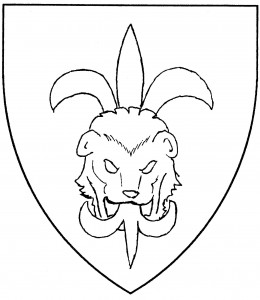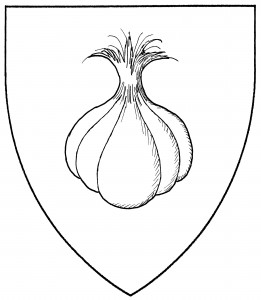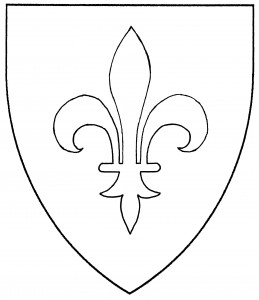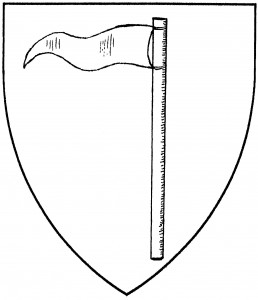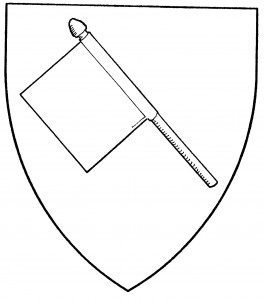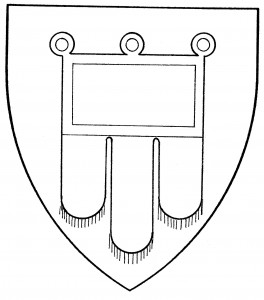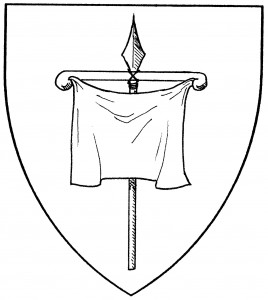While the use of human heads as crests was very popular from the earliest rolls, their use as charges on shields came later, as in the arms of Gundelsdorf, c.1340 [Zurich 431]. Some human heads are affronty or guardant by default, but others aren’t; it depends on the type of human. As a very general rule of thumb, men’s heads face dexter by default, while the heads of children, maidens, &c, are affronty.
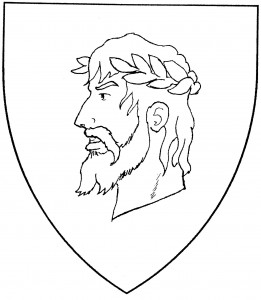
Savage’s head couped (Period)
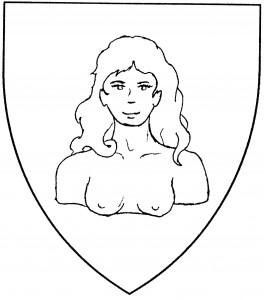
Maiden’s head (or bust) (Period)
The “savage’s head” and the “wild man’s head” are shown with a wreath of leaves on their heads, since the leaves on the rest of their bodies are not in evidence. In other respects, the characteristics of a human head are those of that type of human, and are described under human figure.
As with animal’s heads, human heads must be specifically blazoned as couped or erased; couped heads are far more common. While the dexter-facing heads are couped at the neck, children and maidens are sometimes shown as a bust, showing the shoulders (and, in the maiden’s case, the bosom). This is not an ironclad rule, and seems to be artistic license; if the shoulders are meant to be included, they should be blazoned.
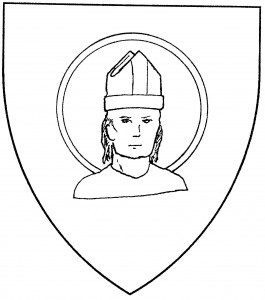
Head of St. Cybi (Accepted)
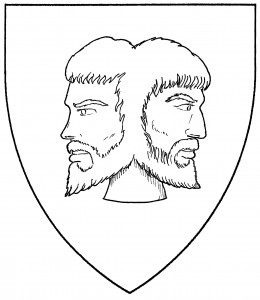
Janus head (Period)
One instance exists in Society armory of “heads of St. Cybi”. St. Cybi was a 6th Century Cornish bishop, and is shown as a tonsured monk with a mitre.
The “Janus head” is taken from representations of the Roman god of beginnings and endings. We’ve an example from period Italian heraldry, in the arms of Banda, c.1550 [BSB Cod.Icon 276:15; cf. also Woodward 201].
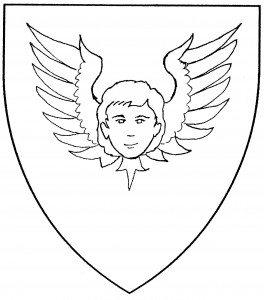
Cherub (Period)
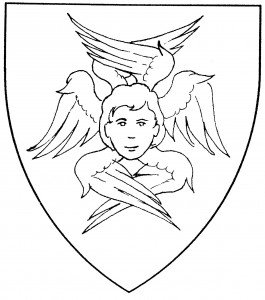
Seraph (Period)
Also included in this category are the heads of humanoid monsters, particularly those which exist only as a head. Preeminent among these is the “cherub”, or “cherub’s head”: a child’s head cabossed, with two wings. Cherubim are found in the canting arms (Italian angeli, “angels”) of Dianiolli, c.1550 [BSB Cod.Icon 272:277]; Legh, 1576 [84] likewise describes the cherub’s use in armory.
The “seraph”, or “seraph’s head”, is a child’s head cabossed, with six wings; Guillim, 1610 [83] gives an example of its heraldic use (misblazoning it as a “cherub with three pairs of wings”). In the Society, the seraph’s “proper” coloration is with pink skin, red hair, and rainbow-colored wings. The seraph should not be confused with the “standing seraph”, a variant of the angel, which is shown with a full body; as an heraldic charge, the standing seraph appears to be unique to the Society.
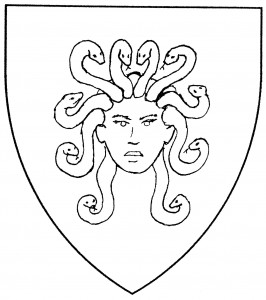
Gorgon’s head cabossed (Period)
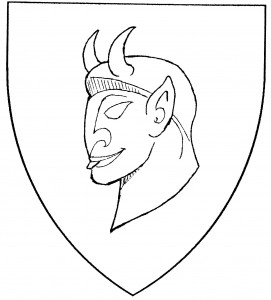
Demon’s head couped (Accepted)
The “gorgon’s head”, taken from the monster of Greek myth, is a woman’s head with serpents for hair. As an heraldic charge, it’s shown in Bossewell, 1572 [III.22º]. The gorgon’s head is cabossed by Society default, though many registrations blazon the posture explicitly. Finally, there is the “demon’s head”, horned and ugly, much like a Notre Dame gargoyle; this appears to be unique to the Society.
For related charges, see hat, helm, hood, mask, skull, wind.
David of Moorland bears: Vert, on a bend Or three Moor’s heads couped sable.
Owain of Holyhead bears: Vert, three heads of St. Cybi proper aureoled Or.
Talanque bears: Azure, a horned demon’s head erased Or.
Petra Malusclavus Africana bears: Per pale azure and gules, a gorgon’s head cabossed argent.
John of Coventry bears: Bendy gules and argent, a Turk’s head affronty couped proper impaled upon a spearhead couped sable.
Staffan Arffuidsson bears: Azure, three seraphs Or.
Sabina de Almería bears: Or, a cross flory, on a chief purpure three Janus heads argent.
